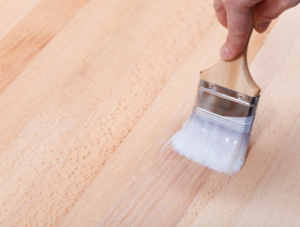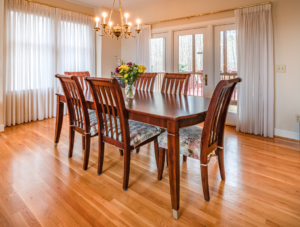Dining Tables
Interior Design and the Art of Choosing Dining Tables
Interior design plays a pivotal role in transforming the ambiance of a home, and the kitchen and dining area stand at the heart of a family’s daily life. When it comes to kitchen design, functionality and aesthetics must coexist harmoniously. Interior designers pay close attention to optimizing the layout, ensuring efficient storage solutions, and selecting durable materials that can withstand the demands of a bustling kitchen. They consider the user experience, ensuring that the kitchen is not only a place for cooking but also a social hub where families and friends can gather. For the dining area, a crucial element often revolves around selecting the perfect dining table. Designers carefully choose dining tables that fit the available space, complement the overall design, and provide comfort during meals. Whether it’s a sleek, modern table for a contemporary home or a rustic farmhouse-style table for a cozy feel, interior designers curate dining areas that cater to the unique preferences and lifestyle of their clients, turning every meal into a memorable experience.
Dining tables are more than just functional pieces; they are also central to the aesthetics of a dining room. Interior designers consider the size, shape, and style of the dining table to create a cohesive and inviting atmosphere. Circular tables foster an intimate dining experience, while rectangular tables can accommodate larger gatherings. The choice of materials, from wood to glass or metal, greatly influences the ambiance of the dining space. Additionally, designers often pay attention to the chairs or seating options that complement the dining table, ensuring a harmonious and comfortable ensemble. Through their expertise, interior designers ensure that the kitchen and dining area become not only functional but also visually appealing spaces where families can come together to share meals and create cherished memories.
Selecting the Ideal Dining Table: A Comprehensive Guide
When it comes to finding the ideal dining table, the choice of wood plays a pivotal role in ensuring longevity and quality. Among the various options available, hardwoods such as oak, cherry, maple, and walnut stand out for their exceptional durability and timeless appeal. These woods not only endure the demands of daily use but also acquire a rich patina over time, enhancing the character of your dining space.
Evaluating Dining Table Quality
Assessing the quality of a dining table involves careful consideration of several key factors. Start by examining its construction. High-quality dining tables feature solid wood throughout, including the tabletop and legs, ensuring robustness and resilience. Avoid tables with veneer surfaces or particleboard, as they tend to be more vulnerable to damage and wear. Inspect the joinery as well – well-crafted tables often employ techniques like dovetail or mortise and tenon joints, guaranteeing sturdy connections and long-lasting performance.
The Importance of Finish and Design
 An equally crucial aspect to scrutinize is the table’s finish. A top-quality dining table should boast a smooth, consistent finish that enhances the natural beauty of the wood while offering protection against spills and stains. Look for uniform coloring and grain patterns, which indicate meticulous craftsmanship. It’s also essential to ensure the table’s stability by gently testing various points to confirm it doesn’t wobble or feel unsteady.
An equally crucial aspect to scrutinize is the table’s finish. A top-quality dining table should boast a smooth, consistent finish that enhances the natural beauty of the wood while offering protection against spills and stains. Look for uniform coloring and grain patterns, which indicate meticulous craftsmanship. It’s also essential to ensure the table’s stability by gently testing various points to confirm it doesn’t wobble or feel unsteady.
Moreover, consider the design and proportions of the table. It should comfortably fit within your dining space, leaving enough room for chairs and easy movement. The style of the table should align with your decor and personal taste, whether you prefer a traditional, rustic, or modern aesthetic. Lastly, factor in the table’s size, ensuring it accommodates the number of people you intend to seat regularly.
In conclusion, the process of selecting the perfect dining table necessitates a thorough examination of wood type, construction, finish, and design. Hardwoods like oak, cherry, maple, and walnut are prime choices for enduring quality. To identify a subpar dining table, watch for veneer surfaces, weak joinery, and unstable construction. A thoughtfully chosen dining table not only serves as the centerpiece for gatherings and meals but also becomes a cherished addition to your home, offering both aesthetic beauty and functional utility for years to come.
